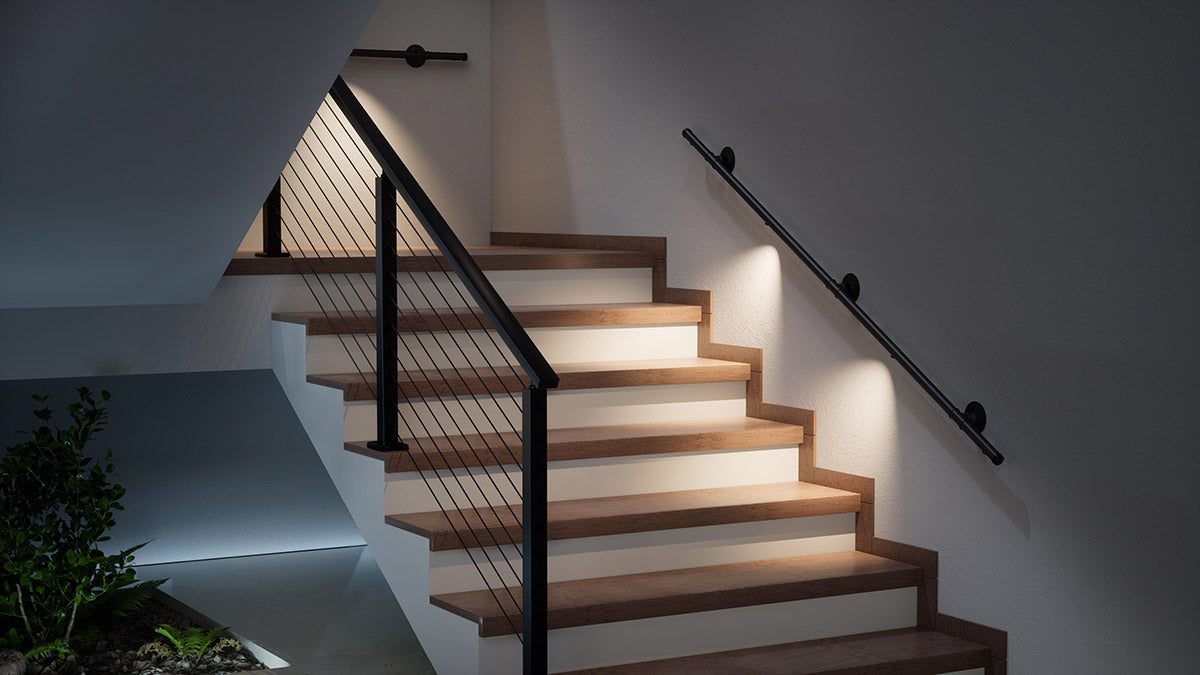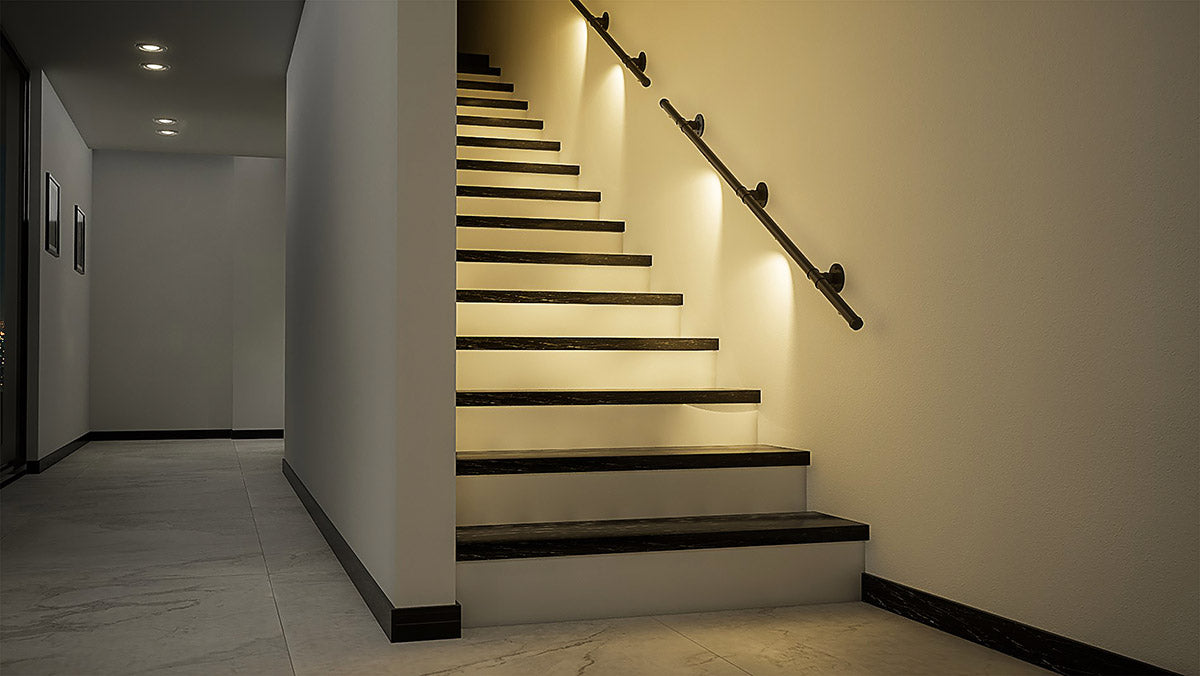TABLE OF CONTENTS
What To Consider When Choosing A Handrail for the Elderly
Ensuring that a home is secure for the elderly is crucial, especially considering that one in four Americans aged 65+ falls each year, according to National Institute on Aging. Handrails play an indispensable role in reducing this risk by providing the necessary support to prevent falls and enhance mobility around the house. Given the array of materials, designs, and safety standards available, selecting the appropriate handrail is a significant decision. This guide is intended to simplify that choice by addressing the crucial questions about selecting handrails. Whether you're looking to install new ones or update existing ones, we'll guide you through the process to ensure you make a decision that prioritizes safety, blends well with the home environment, and supports the well-being of the elderly in your care.

What Are the Specific Needs of the Elderly?
As we age, our physical abilities often shift, necessitating extra measures to ensure safety and mobility at home. Handrails play a pivotal role in this, offering support and stability where it is most needed. Here are three key aspects to consider when evaluating the needs of the elderly for handrails:
- Grip-ability: The handrail should be comfortable to hold onto, with a surface that's easy to grip. This is crucial for those times when balance might be compromised.
- Height and Accessibility: The handrail must be installed at an appropriate height to be easily reachable when stability is needed. It shouldn’t require stretching or bending, as these movements can lead to a loss of balance.
- Strength and Reliability: Perhaps most importantly, handrails need to be securely anchored and capable of supporting the weight of an adult without wobbling or breaking. They should be able to bear full body weight at any time without any risk of collapse.
Preventing falls is vital because they can lead to serious injuries for older adults, such as broken bones or even long-term disabilities. Considering that many household accidents involve falling, properly installed and well-placed handrails can significantly reduce this risk.
How to Choose the Right Handrail Material and Style
Picking out the best handrail for a home where an older adult lives means looking at what it's made of and how it fits into the space. Here are five simple points to help you decide:
Type of Material:
- Wood: It's got a classic style and is easy to hold onto, but it needs some extra care.
- Metal: Super strong, lasts a long time, and doesn't ask for much upkeep—great for busy homes.
- Plastic or Vinyl: Doesn't slip and is easy to clean, but might not outlast wood or metal.
Keeping It in Shape:
- Wood might need you to paint or stain it again over time, while metal usually just needs a quick clean.
- Think about where you live – metal can handle damp places well, but wood might be better in areas that aren't as moist.
Safety First:
- A non-slip surface is key, especially in places like the bathroom where it can get wet.
- Make sure whatever material you choose can be attached firmly so it won't move when leaned on.
Looks Matter Too:
- The handrail should match the style of the house. Metal can give a modern vibe, while wood can bring a warm, classic feel.
- Remember, though, the main job of the handrail is to prevent falls, so safety should always come before style.
Setting It Up:
- Some handrails are easier to install than others. You might need a professional for some materials, while others could be a weekend project you can do yourself.
- The shape is important – curved edges are easier on hands and help with holding on tight.
By considering these straightforward tips, you’ll be better prepared to pick a handrail that’s safe, suits your home's style, and stands up to daily use. The goal is to find the perfect mix of practicality and appeal, ensuring the elderly can move around their home safely and with ease.

Which Safety Standards Should Your Handrail Meet?
Choosing a handrail isn’t just about looks and material; it’s crucial to make sure it meets safety standards as well. Here's what you need to pay attention to:
Building Codes:
- Local laws often have specific rules about how handrails should be built and installed. It's important to check these to ensure the handrails are legal and safe. Typically, they'll specify things like height, spacing, and how they should be anchored.
Height and Length Requirements:
- When installing handrails, it's important to follow state laws, which often require them to be over 36 inches tall. For home use, 36-inch high handrails are common. In business settings, handrails are usually 42 inches high, which helps with safety and meets the needs of elderly people without having to reach up or bend down.
- Handrails should run the entire length of stairs or walkways, with extensions at the top and bottom so someone can hold on the whole time they’re moving up or down.
Strength and Stability:
- Handrails must be sturdy enough to support someone if they lean or fall against them. They need to be solidly attached to the wall or floor, with no wobbling or give.
Features for Additional Support:
- Edges should be smooth to prevent injuries if someone brushes against them.
- The surface should be easy to grip, even for hands that might not be as strong as they used to be. Round or rectangular shapes are often recommended for ergonomics.
By ensuring all these criteria are met, you’ll have a handrail that’s not only compliant but also offers maximum safety and usability for the elderly.
How to Balance Aesthetics with Practicality in Handrail Design
When installing handrails, it's essential to maintain a balance between how they look and how well they work. Here are some tips for achieving that harmony:
Integrating Style with Safety:
- Choose materials and colors that complement the existing décor of the home. For example, opting for an Antique Brass Galvanized Steel handrail can add an elegant touch of timelessness, while also ensuring strength and durability. This material choice not only enhances safety but also contributes to the overall charm and character of the interior.
- Consider the profile of the handrail; simple designs can be both functional and stylish, blending into the space rather than standing out awkwardly.
Safety as a Feature:
- Make safety features part of the design. For example, LED lighting can be incorporated along the handrail path for better visibility and as a modern design element.
- Highlight the handrail by making it a feature piece. A sleek metal one can serve as a focal point.
Mind the Finishing Touches:
- Pay attention to the finish of the materials used; matte finishes can minimize slipping and are often preferred for better grip.
- The end-caps and joints should not only be safe but can also be styled to add to the overall look.
Balancing aesthetics with practicality means creating a cohesive look that safely supports the elderly and enhances the home environment. By considering these points, you can install handrails that are both a decorative element and a critical safety feature.

Muzata HW21 BBG: Secure LED Handrail for Senior Safety Innovative Intelligent Brightness Control
Our cutting-edge handrail is crafted not just for support, but also to guide you in low-light conditions. The built-in infrared sensor detects movement, automatically brightening your path on approach with LED lights and dimming once you've safely passed.
For Family Safety
The sturdy design offers reliable support, perfect for everyone in the family - especially elderly members who may need extra care navigating stairs. Plus, the automatic lighting alleviates the need for switches or searching for lights in the dark.
Easy Power Connection
Installation is a breeze with our comprehensive user guide and included accessories. Just connect to a power source with a 12V DC adapter and enjoy the convenience.
Stylish Industrial Design
Muzata handrails boast a meticulously treated surface that complements an array of decor styles. Whether your home is retro or ultra-modern, the HW21 adds a distinctive charm alongside practicality.
| Feature | Description |
| Mounting Type | Wall-Mounted Handrail |
| Lighting | Infrared Sensor LED |
| Cutting Diameter | 1 Inch |
| Length | 6.6 Feet |
| Special Feature | Intelligent Brightness Control |
Choose and Check Handrails for Senior Security
Creating a safe environment for the elderly at home often starts with the small details, like ensuring handrails are reliable and easy to use. They should feel comfortable in your hand, be solidly anchored, and blend nicely with the surroundings of your home. Installing them correctly is just as important as regular check-ups to maintain their condition. Taking care of handrails might seem like a minor task, but it's one that speaks volumes about our commitment to safety and comfort for our loved ones as they move around their homes with confidence.
FAQs About Handrail Safety for the Elderly
Q1: How often should I check the handrails for safety?
It’s best to do a thorough check of handrails every six months. However, if you notice any loose fittings or signs of wear, it’s important to address these issues immediately.
Q2: Can handrails be customized to fit any home style?
Absolutely! Handrails come in a variety of materials and styles that can be tailored to complement your home's decor while maintaining their primary safety function.
Q3: Are there specific handrail designs for those with arthritis?
Yes, handrails are available with ergonomic designs featuring wider diameters and softer surfaces that are easier to grip and put less stress on painful joints.
Q4: What is the recommended handrail diameter for the best grip?
The ideal diameter for a handrail is typically between 1 inch and 2 inches, which allows most people to get a firm and comfortable grasp.
Q5: Is there a difference in maintenance between indoor and outdoor handrails?
Yes. Outdoor handrails may require more frequent maintenance due to exposure to weather elements. They often need checks for rust, rot, or weather-related damage, while indoor handrails mostly require regular cleaning and occasional tightening of fittings.
Q6: Can handrails be installed on any type of wall surface?
Most wall surfaces can support handrails as long as they're properly anchored. It might require specialized hardware for certain materials like masonry or tile. Always consult with a professional if unsure.




